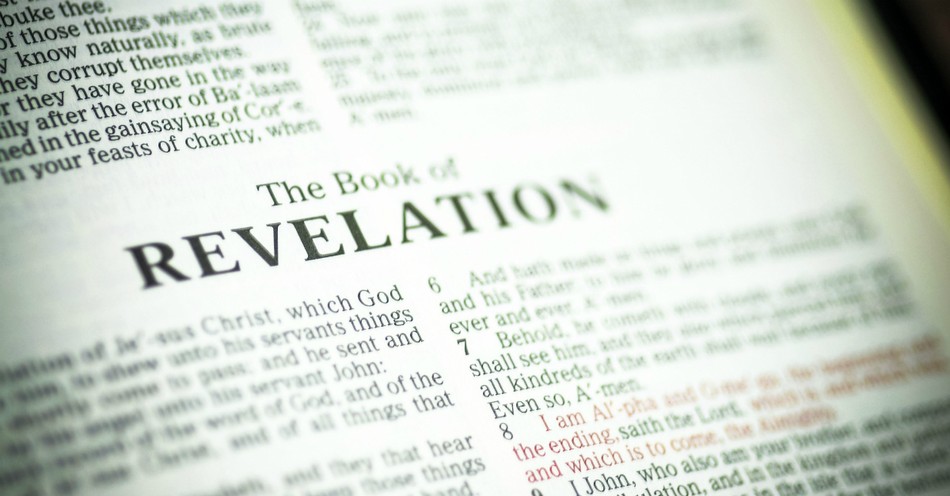Many things about the book of Revelation have troubled Christians for the past two thousand years. With its apocalyptic description of the last days and glorious vision of Christ’s return, theologians have debated how to interpret Revelation’s prophetic warnings for centuries. For this reason, many believers today have resorted to avoiding Revelation altogether. And yet, the apostle John reminded his readers of the eternal blessing in store for “the one who reads and those who hear the words of the prophesy, and heed the things which are written in it.” (Revelation 1:3, emphasis added).
Furthermore, Jesus taught His followers to “be alert” and “ready” for His return at all times (Matthew 24:42-44), going so far as to provide them with signs and warnings in preparation for His imminent arrival.
But what do we know about the book of Revelation, its origin, and its author? And when was the book of Revelation written?
Do We Know Who Wrote Revelation?
Thankfully, the author of Revelation identifies himself in the first verses of Revelation as John, who writes, “the Revelation of Jesus Christ, which God gave Him to show to His bond-servants, the things which must soon take place; and He sent and communicated it by His angel to His bond-servant John, who testified to the word of God and to the testimony of Jesus Christ, even to all that he saw.” (Revelation 1:1-2, emphasis added). This John affirms his authorship again in Revelation 1:4, 1:9, and 22:8.
Until the third century, the church almost unanimously agreed that Revelation was written by one of the original twelve disciples of Jesus Christ: John, the son of Zebedee and brother of James. Church fathers such as Clement of Alexandria, Tertullian, Origen, Hippolytus, and Victorinus affirmed the apostle John as the author of Revelation. Even Justin Martyr (135 AD), who had ministered in Ephesus, one of the seven churches of Asia Minor that John wrote to in Revelation 2:1-7, affirmed the son of Zebedee as the author of Revelation.
Only recently have some questioned whether a different John wrote Revelation than the original apostle and member of Christ’s “inner circle.” Despite these doubts, the consensus amongst church leaders and bible scholars remains that John the apostle was the verified author of Revelation.
Who Was the Apostle John?
Most of what we know about John comes from the gospels, where he regularly appears in tandem with his older brother James, who Christ had nicknamed “The Sons of Thunder” (Mark 3:16-17).
Of course, none of the Twelve were as passionate, hot-tempered, and zealous as James and John.
As disciples, James and John were members of Jesus’ “inner circle” along with Peter. These three were invited into the room when Jesus raised Jairus’ daughter from the dead (Mark 5:37). They witnessed Christ’s glory on the Mount of Transfiguration (Matthew 17:1), were allowed to question Jesus privately on the Mount of Olives (Mark 13:3), and went further with Jesus into the Garden of Gethsemane on the night of His arrest than the others (Mark 14:33).
John was also one of the only disciples to witness the full crucifixion of Jesus as he was present at the foot of the cross. There, as Jesus breathed His last, Jesus even gave John the responsibility of caring for His mother after His departure (John 19:26-27).
After Christ’s ascension, John, who referred to himself as “the disciple, whom Jesus loved” (John 13:23), traveled with Peter throughout Judea, healing the sick and preaching the gospel wherever they went (Acts 3-4, 8). John would eventually become a leader of the Jerusalem church and would go on to write an account of Christ’s life and ministry in the book of John as well as three letters entitled 1, 2, & 3 John.
Tradition holds that John eventually left Jerusalem around 70 AD and began ministering to the churches in Asia Minor, serving in and around Ephesus.
As an elder apostle, John carried enormous respect as one of the few remaining apostles who had directly witnessed the miracles, ministry, and resurrection of Jesus. Even in his later years, many looked to John’s wisdom and apostolic authority, knowing that if anyone had the authority to correct doctrinal errors and affirm the fundamental, essential truths of the Christian faith, it was the anointed apostle.
Both the Bible and church history tell us that John would eventually be arrested and exiled to the island of Patmos by the Roman Empire. There, the last surviving member of the Twelve received the Revelation of Jesus Christ, which included prophecies of the last days, visions of Christ’s glorious Second Coming and final victory, and descriptions of Christ’s eternal reign. These he recorded in the book of Revelation.
What Is the Earliest Possible Date for When Revelation Was Written?
Biblical scholars debate the actual date that John penned the book of Revelation.
While most scholars lean towards a later date that would put the writing of Revelation somewhere closer to 95 or 96 AD, some believe that John wrote Revelation much earlier, during the reign of Nero (54-68 AD).
A preterist interpretation of Revelation sticks closer to a 68 AD date. In this interpretation, the bulk of Revelation’s prophetic visions were recorded in 68 AD and came to fruition around 70 AD, with the Second Coming of Jesus Christ being fulfilled in the destruction of the temple in Jerusalem that year.
Under this view, the great tribulation described in Revelation is believed to have prophesied the persecution of the Jews during the reign of Nero and included the subsequent siege and destruction of Jerusalem at the hands of Rome in 70 AD. Preterists also believe that references to the antichrist of Revelation point to the Caesars of Rome, while the whore of Babylon symbolizes the Roman Empire and its eventual downfall.
While this is not a widely held interpretation, proponents of the preterist view and a 68 AD date look to actual historical events fulfilled shortly after John penned Revelation. They may also highlight the words of Jesus that hint at the Second Coming and John’s Revelation coming to fruition before the end of the first century (Matthew 10:23; Luke 9:27; Matthew 16:28; 24:34).
However, while the first few chapters of Revelation reference a handful of first-century churches, names, and historical events, most bible scholars believe that everything from Revelation 4 on refers to events still to come in the days before Christ’s return. In any case, various interpretations tend to correlate with the date John is believed to have written Revelation.
What Is the Latest Possible Day for When Revelation Was Written?
The more popular belief held by the early church and most theologians today is that John wrote Revelation near the end of Domitian’s reign, between 81-96 AD. Many early church leaders held to a 95 or 96 AD date. There is good evidence to suggest that John wrote Revelation closer to the end of the first century rather than somewhere in the middle.
For instance, John references the existence of persecution in the early chapters of Revelation, which corresponds with the documented wave of persecution that broke out against the church during the reign of Emperor Domitian. With the promise of more persecution to come (Revelation 2:10), the content of John’s letters to the seven churches of Asia Minor is also consistent with the known state of those churches in the twilight of the first century.
Furthermore, in the books of Ephesians, Colossians, as well as 1 and 2 Timothy, Paul describes churches of Asia Minor that are spiritually healthy. Given that Paul addressed those churches in the mid-sixties, enough time would have needed to pass for them to have declined to such an extent as described by John in Revelation.
According to church tradition, John did not leave Palestine for Asia Minor until after the Jewish revolt against Rome in 66-70 AD. According to one biblical scholar, “placing the writing of Revelation during Nero’s reign would not allow sufficient time for John’s ministry to have reached the point where the Romans would have felt the need to exile him.”
Therefore, the widely held view of Revelation’s origin suggests that, while John did pen Revelation within the framework of a specific historical context with references to specific first-century churches and events, the bulk of Revelation’s apocalyptic vision surrounding Christ’s return, final victory, and eternal reign has yet to come to fruition. For this, the church waits in anticipation, knowing that “the time is near” (Revelation 1:3).
Photo Credit: ©GettyImages/dtimiraos

This article is part of our larger End Times Resource Library. Learn more about the rapture, the anti-christ, bible prophecy and the tribulation with articles that explain Biblical truths. You do not need to fear or worry about the future!
The Second Coming of Jesus
Who Are the 144,000 in Revelation?
Who Are Gog and Magog in the Bible?
What Is the Apollyon?
Is the Apocalypse Mentioned in the Bible?
Signs of the End Times and the Rapture




.jpg)